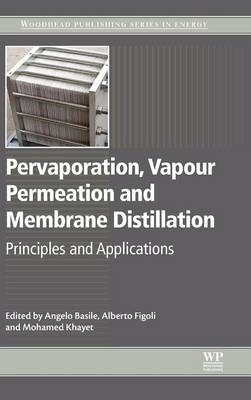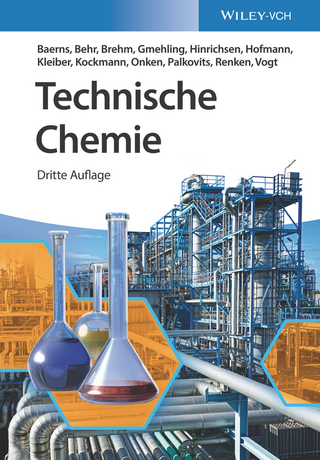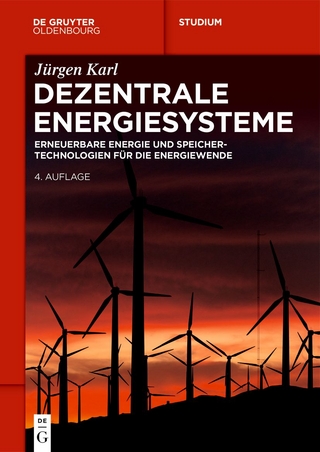
Pervaporation, Vapour Permeation and Membrane Distillation
Woodhead Publishing Ltd (Verlag)
978-1-78242-246-4 (ISBN)
Vapour permeation and membrane distillation are two emerging membrane technologies for the production of vapour as permeate, which, in addition to well-established pervaporation technology, are of increasing interest to academia and industry. As efficient separation and concentration processes, they have high potential for use in the energy, water, chemical, food and pharmaceutical sectors.
Part One begins by covering the fundamentals, preparation and characterization of pervaporation, before going on to outline the associated systems and applications. State of the art uses, future trends and next generation pervaporation are then discussed. Part Two then explores the preparation, characterization, systems and applications of membranes for vapour permeation, followed by modelling and the new generation of vapour permeation membranes. Finally, Part Three outlines the fundamentals of membrane distillation and its applications in integrated systems, before the book concludes with a view of the next generation.
Angelo Basile, a Chemical Engineer, is a senior Researcher at the ITM-CNR, University of Calabria, where he is responsible for research related to both the ultra-pure hydrogen production and CO2 capture using Pd-based Membrane Reactors. Angelo Basile's h-index is 53, with 387 document results with a total of 8,910 citations in 5,034 documents (www.scopus.com – 24 May 2023). He has more than 170 scientific papers in peer-to-peer journals and 252 papers in international congresses; and is a reviewer for 165 int. journals, an editor/author of more than 50 scientific books and 120 chapters on international books on membrane science and technology; 6 Italian patents, 2 European patents and 5 worldwide patents. He is referee of 104 international scientific journals and Member of the Editorial Board of 22 of them. Basile is also Editor associate of the Int. J. Hydrogen Energy and Editor-in-chief of the Int. J. Membrane Science & Technol. and Editor-in-chief of Membrane Processes (Applications), a section of the Intl J. Membranes. Basile also prepared 42 special issues on membrane science and technology for many international journals (IJHE, Chem Eng. J., Cat. Today, etc.). He participated to and was/is responsible of many national and international projects on membrane reactors and membrane science. Basile served as Director of the ITM-CNR during the period Dec. 2008 – May 2009. In the last years, he was tutor of 30 Thesis for master and Ph.D. students at the Chemical Engineering Department of the University of Calabria (Italy). From 2014, Basile is Full Professor of Chemical Engineering Processes. Dr. Alberto Figoli obtained his PhD degree at Membrane Technology Group, Twente University (Enschede, The Netherlands) in 2001. He graduated in Food Science and Technology at the Agriculture University of Milan 1996. Since December 2001, he has a permanent position as Researcher at Institute on Membrane Technology (ITM-CNR) in Rende (CS), Italy.He also had international experience in industrial research labs: about 1 year (1996) at Quest International Nederland B.V. (ICI), Process Research Group, Naarden (The Netherlands) on “Setting of a pilot plant for aromatic compounds extraction using the pervaporation (PV) membrane technology; Secondment in 2010 and 2011 at GVS, SpA, Bologna, within the EU project “Implementation of Membrane Technology to Industry (IMETI) on “Preparation and Characterisation of hybrid membranes for VOCs removal.He was granted for the “Short Term Mobility Programme by CNR, in 2004 and 2005, at the “Environmental Protection Agency of United States (USEPA), Sustainable Technology Division, Cincinnati (USA) on “Volatile Organic Compounds (VOCs) and aroma removal using a novel asymmetric membrane by pervaporation nell’ambito dello “Short Term Mobility Programme funded CNR.He is responsible and involved in various National and International projects. He is also responsible, within the CNR organisation, for two research lines on membrane preparation and characterisation and on pervaporation (PV) applications.He is author of more than 60 research papers in peer reviewed journals, several book chapters, a book, two patents and many oral presentations (also as invited lecture) in National and International Conferences and Workshops. Dr. Mohamed Khayet is director of the University Complutense of Madrid (UCM) Research Group “Membranes and Renewable Energies (MER) and Professor (Applied Physics Area) at the Faculty of Physical Sciences (UCM) (Department of Structure of Matter, Thermal Physics and Electronics). He got his Ph.D. (1997) in Physical Sciences and he realized various research stays in various international institutions (Industrial Membrane Research Institute in Ottawa, Canada; Institute of Nuclear Chemistry and Technology in Warsaw, Poland; Centre for Clean Water Technologies at the University of Nottingham in UK; Singapore Membrane Technology Centre and Nanyang Technological University in Singapore, Yale University in New Haven, USA; University of California Berkeley in USA, etc.). Among other grants, he got the Fulbright Grant (2019). He is an expert in the field of membrane science, nanotechnology and renewable energies. He has coordinated various national and international projects (over 20) funded by different institutions (European Union, Middle East Desalination Research Centre, Spanish Ministries; Companies such as Abengoa, etc.) on membranes and modules engineering for different separation processes. He published over 200 papers in international journals, filed 6 International Patents, published 5 books and various book chapters in the field of membrane science and related technology. Among other recognitions, he received the Prince Sultan Bin Abdulaziz International Prize for Water (PSIPW) in 2012. He edited various special issues in international journals such as Desalination, Polymers and Membranes. He acted as Editor of the international Journal “Desalination (2018-2022) and served as associated editor of different journals. Currently, he is member of the Editorial Board of various journals related with water treatment, renewable energy, nanotechnology, membrane science and separation processes. - Google Scholar: https://scholar.google.com/citations?user=H_lnjFkAAAAJ&hl=en - Scopus: https://www.scopus.com/authid/detail.uri?authorId=56517090400 - ORCID ID: https://orcid.org/0000-0002-5117-2975
Related titles
List of contributors
Woodhead Publishing Series in Energy
Preface
Part One. Pervaporation
1. Fundamentals of pervaporation
1.1. Introduction
1.2. Fundamentals of mass and heat transfer in pervaporation
1.3. Process and technological matters in pervaporation
1.4. Concluding remarks and future trends
2. Pervaporation membranes: preparation, characterization, and application
2.1. Introduction
2.2. Pervaporation (PV) membrane materials
2.3. Characterization of pervaporation membranes
2.4. Membrane module configurations for pervaporation
2.5. Membranes for pervaporation applications
2.6. Future trends and conclusions
3. Integrated systems involving pervaporation and applications
3.1. Introduction to integrated systems involving pervaporation
3.2. Applications of integrated systems involving pervaporation
3.3. Conclusions and future trends
3.4. Sources of further information and advice
4. Pervaporation modeling: state of the art and future trends
4.1. Introduction
4.2. Fundamentals of pervaporation modeling
4.3. Applications to improve the efficiency of pervaporation
4.4. Conclusions
4.5. Future trends
4.6. Sources of further information and advice
5. Next-generation pervaporation membranes: recent trends, challenges and perspectives
5.1. Introduction
5.2. Modified ceramic membranes
5.3. Mixed matrix membranes
5.4. Bio-inspired membranes and membrane synthesis approaches
5.5. Supported liquid (SL) membranes
5.6. Final remarks and future trends
5.7. Sources of further information
Part Two. Vapour permeation
6. Membranes for vapour permeation: preparation and characterization
6.1. Introduction
6.2. Polymer membranes
6.3. Zeolite membranes
6.4. Mixed matrix membranes
6.5. Future directions
7. Integrated systems involving membrane vapor permeation and applications
7.1. Introduction
7.2. Integrated systems involving membrane vapor separation
7.3. Applications of membrane vapor separation
7.4. Conclusion and sources of further information and advice
7.5. Future trends in development of membrane vapor separation
8. Vapour permeation modelling
8.1. Introduction
8.2. Fundamentals of vapour permeation modelling into dense polymeric membranes
8.3. Diffusion modelling
8.4. Solubility modelling
8.5. Vapour permeation in mixed matrix membranes and heterogeneous systems
8.6. Future trends
8.7. Conclusions
9. New generation vapour permeation membranes
9.1. Introduction
9.2. Current limitations of vapour permeation (VP)
9.3. Emerging VP membrane materials
9.4. Emerging membrane module configurations
9.5. Emerging applications for VP
9.6. Conclusions and future trends
9.7. Sources of further information
Part Three. Membrane distillation
10. Fundamentals of membrane distillation
10.1. Introduction: nonisothermal membrane processes
10.2. Key characteristics of membrane distillation
10.3. Types of membranes and membrane module configurations for membrane distillation
10.4. Membrane distillation theory
10.5. Typical application of membrane distillation technology
10.6. Conclusions
10.7. Future trends and sources of further information and advice
11. Membranes used in membrane distillation: preparation and characterization
11.1. Introduction
11.2. Materials for membrane distillation (MD) membranes
11.3. Design and fabrication of MD membranes
11.4. Characterization of MD membranes
11.5. MD membrane modules and testing of MD membranes
11.6. Conclusions and future trends
11.7. Sources of further information and advice
12. Integrated systems involving membrane distillation and applications
12.1. Introduction
12.2. Applications of membrane distillation in desalination
12.3. Other applications of membrane distillation
12.4. Integrated systems involving membrane distillation
12.5. Conclusions and future trends
12.6. Sources of further information
13. Modelling of pore wetting in membrane distillation compared with pervaporation
13.1. Introduction
13.2. Fundamentals of membrane distillation (MD) modelling and improvement
13.3. Review of experimental works on MD membrane pore wetting
13.4. Development of a theoretical model for pore wetting in vacuum MD
13.5. Conclusions and future directions
14. Next generation membranes for membrane distillation and future prospects
14.1. Introduction
14.2. Materials for membrane distillation
14.3. Emerging module configurations for membrane distillation
14.4. Conclusions and future trends
Index
| Reihe/Serie | Woodhead Publishing Series in Energy |
|---|---|
| Verlagsort | Cambridge |
| Sprache | englisch |
| Maße | 152 x 229 mm |
| Gewicht | 830 g |
| Themenwelt | Naturwissenschaften ► Chemie ► Technische Chemie |
| Technik ► Elektrotechnik / Energietechnik | |
| ISBN-10 | 1-78242-246-3 / 1782422463 |
| ISBN-13 | 978-1-78242-246-4 / 9781782422464 |
| Zustand | Neuware |
| Haben Sie eine Frage zum Produkt? |
aus dem Bereich


